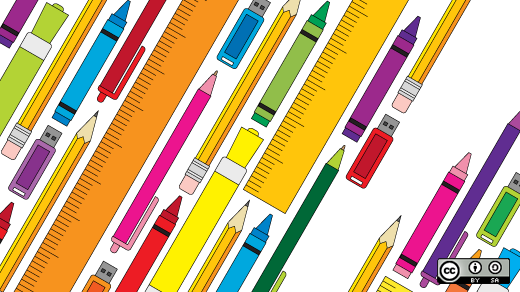"Free," "open" and "libre" software has been a buzzword in media and technology spheres alike. A lot of heat surrounds its implementation, especially in developing countries. While there is much confusion concerning how open source can be used to leverage the benefits of information and communication technologies (ICT) and its impact on the areas of implementation, there is one definite sector where open source can be guaranteed to produce magnificent results when properly used.
ICT-integrated education systems are widely under adoption by institutions all around the world. There have been mixed outcomes of such implementations, ranging from good indicators to failed ones, especially at lower grades. The root cause of such variations in the outcomes is embedded deep inside the correlation of those outcomes to various input determinants and learning contexts. These determinants and their correlation have been properly depicted in the following model:

(Source: Bhatta, 2005)
Only a proper balance of all these determinants is responsible for achieving the desired results. According to Bhatta in "Tackling the Problems of Quality and Disparity in Nepal’s School Education: The OLPC Model": "Effective use of ICT-based teaching-learning can potentially have a profound impact on the classroom/teacher-level processes and student-level processes." Also, it should be noted that ICT-based education systems should not be taken as replacements for traditional lecture-based teaching/learning approach; the traditional method has its own merits and advantages, which the ICT approach shall not dare to replace. ICT integration, with all its strengths, shall rather be applied to enrich the learning process so that an environment conducive to learning can be created, one that can provide students with the opportunities to actively engage with the topic they are learning.
Now having understood these benefits, dimensions, and effects of ICT in education, a daunting question of how to effectively use ICT in education arises. Bhatta maintains that "Effective use of ICT in education means, among other things, creating adequate digital content for schooling purposes and integrating it in the regular teaching learning process." The digital content, in particular, spans these three types of content: a) Interactive activities (or software modules), b) a digital library, c) creative works from teachers and students themselves. Individual creations from students as well as teachers are of great importance.
It needs to be emphasized that one key difference between traditional approaches to educational enhancement and the ICT based approach is that the latter puts special emphasis on student-level processes. Meanwhile, it is equally important to maintain that by implementing ICT based approach for enhancing education, technology is never meant to replace the teacher in the classroom, but is rather meant to change the teacher's role from the deliverer of knowledge to a facilitator who is the pivot of knowledge-based synthesis, as well as the one who encourages research, exploration, and creativity among students.
So how does all of this fit with the free software paradigm? Free and open source software (FOSS) has all the necessary features that involve creativity and sharing, and hence it helps to leverage the benefits of ICT integration into education. Open source helps by bringing together numerous collaborators and developers who, through synergy, tend to develop quality tools which in turn attract more users and collaborators. Also, the re-usability feature of open source makes sure that "re-inventing the wheel" is not required when some feature that has been previously implemented needs to find its way into the development of a new tool, reducing developing time so that developers and users can focus on other innovations. Open source enables localization and customization so that the same tools can be adapted in various local regions. Meanwhile, by making sure the data/content created using these tools is licensed under an open source license, the reusability of this knowledge can be assured. This encourages worldwide sharing of knowledge and artifacts, and resulting in a massive repository of knowledge which is open for access to everyone.
Now that we have reached an understanding of how open source-enriched ICT tools can contribute to the quality of education, it is the right time to suggest the real tools that could help us achieve our goal–an efficient, exploratory and universal education. To host educational frameworks and other tools, GNU/Linux and MeeGo are the best options as the operating system to power various device being used. Moodle, which is based on social constructionist architecture to enable knowledge creation, sharing, grading and a lot of learning activities, is the best tool for a Virtual Learning Environment (VLE). A combination of Fedora Commons and Fez helps to maintain digital repository for various types of content, hence making it useful for managing a digital library. Similarly SchoolTool, developed by the Shuttleworth foundation, is a great tool for classroom management. This is not to underestimate the other tools available in the open source domain; rather, more and more tools are available and will be under development to enhance ICT-integration in education. This is also, in fact, the fundamental gist of the One Laptop Per Child (OLPC) model.
I would like to welcome you all to open education!
Originally published on hreasingh.com.np under a Creative Commons Attribution-NonCommercial-ShareAlike 3.0 Unported License. Reposted with permission of the author.







2 Comments